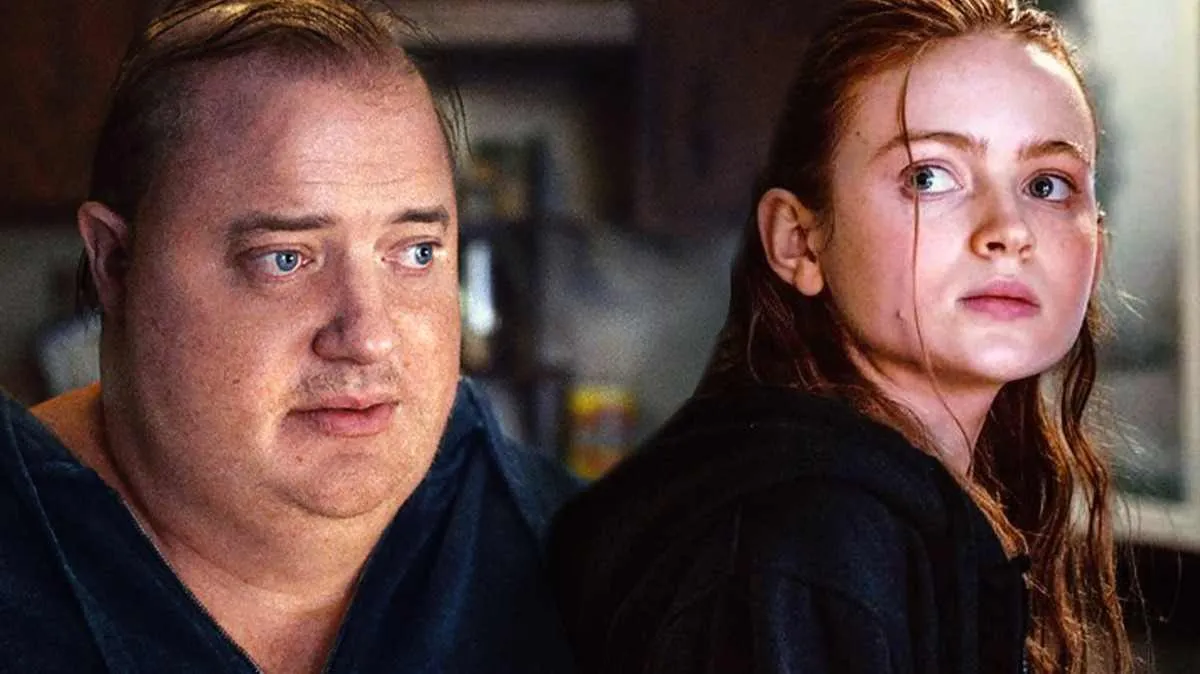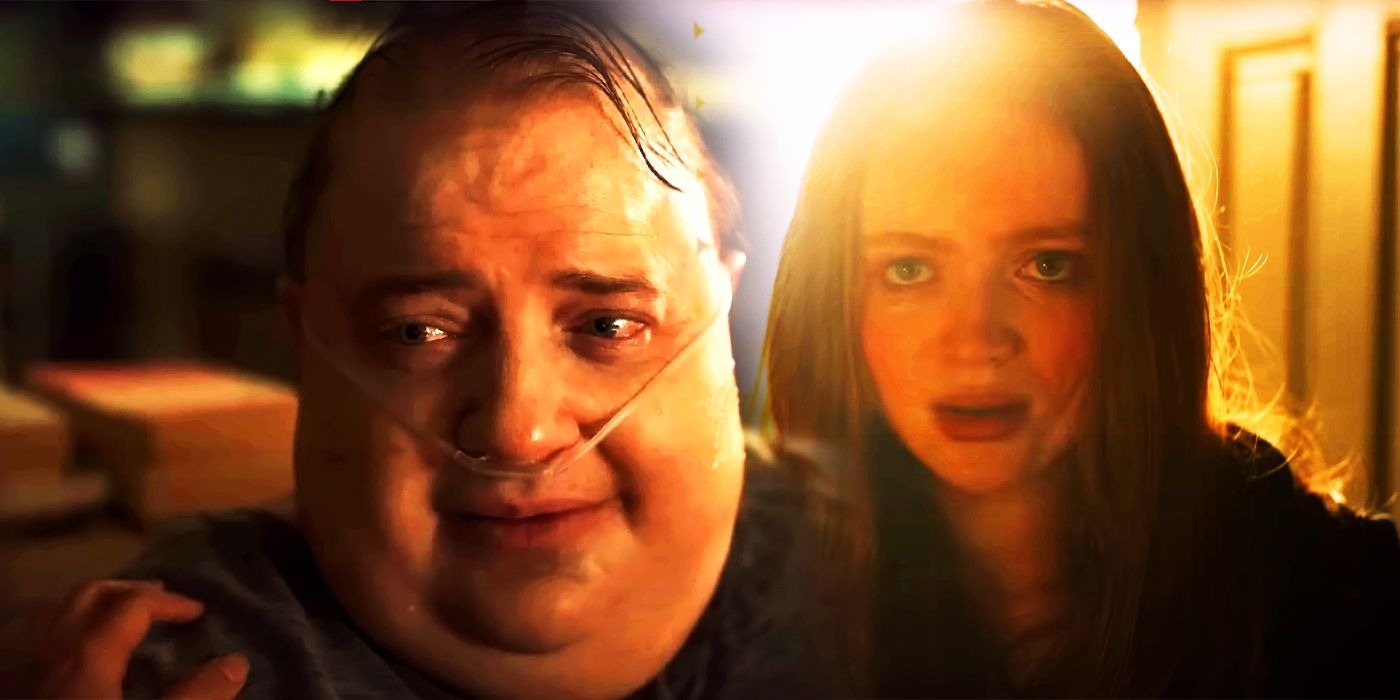It’s easy for one to get drawn into the intense emotional atmosphere of Darren Aronofsky’s moving drama The Whale, where Brendan Fraser takes on the role of Charlie, a withdrawn, 600-pound literature lecturer battling through his final days.
He aims to repair his broken bond with his teenage daughter, Ellie (played by Sadie Sink), whom he left behind many years back. But while the film builds emotions steadily, some viewers might find the ending a bit complex to grasp.

That was why Brendan Fraser and screenwriter Samuel D. Hunter were asked to share their thoughts on the last scene and what it represents for Charlie’s path.
The Emotional Build-Up Between Charlie and Ellie
Rather than rushing into the main moment, the film patiently leads up to a crucial encounter between Charlie and Ellie. Charlie keeps defending Ellie’s erratic behavior and wounded emotions throughout, especially when speaking to Liz (Hong Chau), his longtime friend and caregiver.
He strongly believes Ellie, just like many others, still can show empathy. He constantly praises an old essay she wrote about Moby Dick, which he sees as proof of her honesty, raw passion, and moral clarity. Even with all this, Ellie remains distant and unconvinced about Charlie’s intentions for most of the film.
Brendan Fraser explains that Ellie deliberately makes things hard for Charlie the very first time they meet in the film. He points out that she positions herself behind him, knowing fully well that he can’t turn around.
That moment shows how she decides to torment him a little — not out of wickedness, but as a way of processing the pain she feels. Her anger comes out sharply, and she challenges Charlie by snatching away his walker and pushing him to stand up on his own.
She knows how difficult that would be for him, yet she does it anyway, making him try to prove himself — something he physically can’t manage.
What the Final Scene Means for Charlie and Ellie
That particular moment, according to Fraser, helps viewers understand what happens in the film’s last scene, where father and daughter manage to find a genuine connection. As Ellie reads her essay aloud, Charlie once again tries to stand and move towards her.
From this point, the film introduces a bit of fantasy. Fraser describes the final moment as Charlie’s act of “contrition” — a moment where he receives emotional release after finally getting through to Ellie. He reassures her that he recognizes who she really is and has always been.
Fraser describes Charlie’s effort to stand as something extremely difficult — a task that demands everything from him. But for him, managing to truly connect with Ellie, humbling himself before her, and owning up to his past mistakes, brings peace.
Although his life hasn’t ended physically in that instant, Charlie seems to understand that he no longer needs to keep living. This explains why he removes his breathing aid, listens to Ellie read the essay, and gathers the strength to stand.
Fraser paints the moment vividly: Charlie rises with determination and takes baby steps toward his child, and in a beautifully framed scene, a strong white light appears as both of them look upwards.
Based on what one believes spiritually or otherwise, this magical moment suggests that Charlie, through a touch of symbolic realism, finally lets go and “flies.”
The Screenwriter’s Perspective on the Ending
Hunter, who wrote the screenplay, describes the journey Charlie takes as similar to a “hero’s quest,” where the reward at the end is not just redemption but something deeply personal. He sees Charlie’s entire struggle throughout the film as an effort to reflect Ellie’s true self to her.

That essay she once wrote, which Charlie always treasured, becomes the mirror. When Ellie finally hears it read aloud, she can’t deny she once wrote it — even though she got a D grade. But Charlie, years later, still calls it the best thing he’s ever read. At last, Ellie feels seen by someone, and that someone is her father.
Interpretation of the Final Scene
When asked if Charlie is physically walking in that final moment, Hunter says people can decide for themselves. He calls it an “apotheosis” and says it’s up to viewers to interpret it how they like. In the original play version, sound effects of waves were used, getting louder during that scene.
So the story can be understood in two ways — either something miraculous is happening literally or the moment is meaningful in a more emotional or spiritual sense. Hunter says the film is designed in such a way that whichever interpretation a viewer prefers is just as valid as the other.
Where can you watch it online? You can purchase “The Whale” through Amazon Video.



